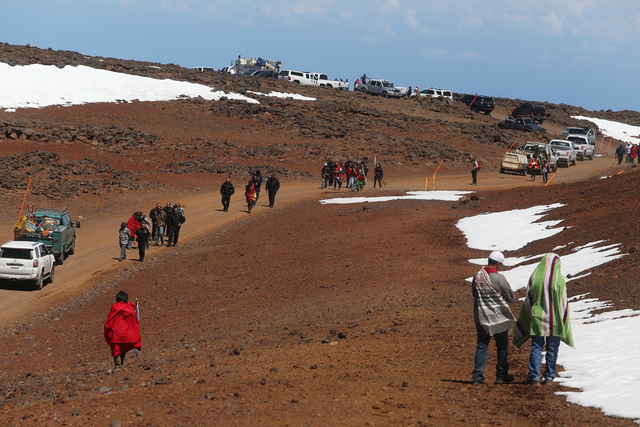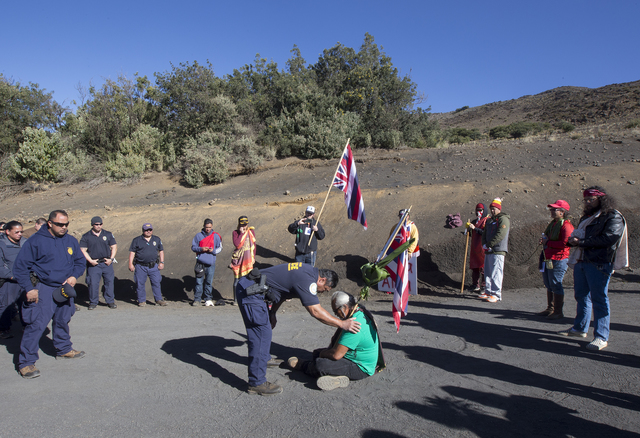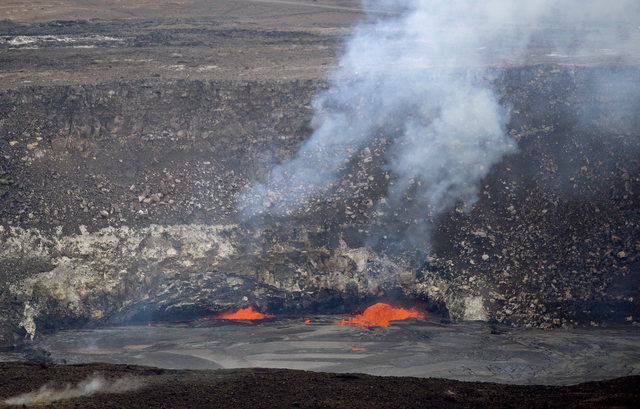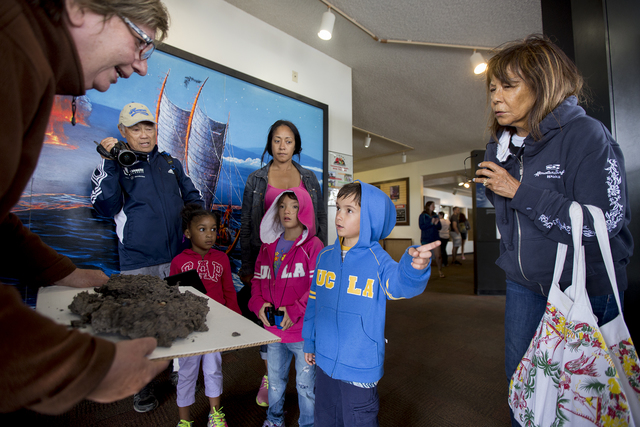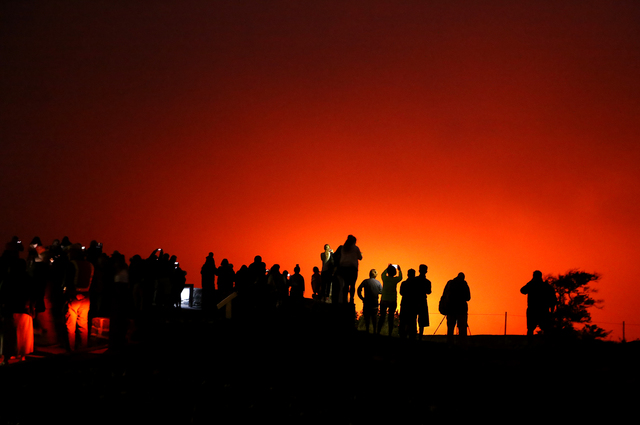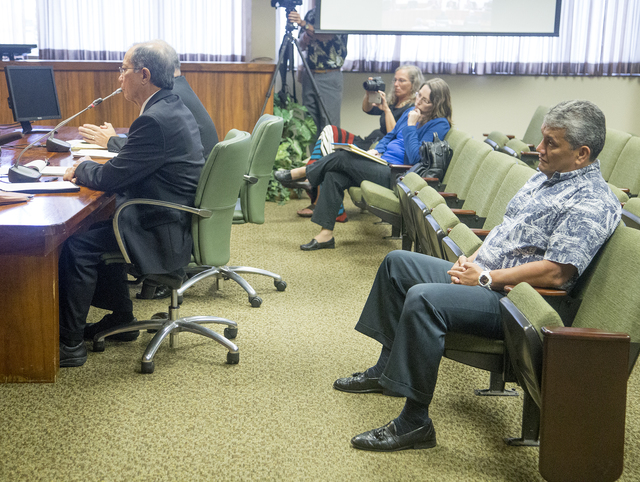2015: The year in review; Telescope controversy, Kenoi’s pCard abuse, dengue fever among top stories of the year
It’s time to bid aloha to 2015 while the world’s attention is riveted to an ongoing fictional war saga in a galaxy far, far away.
ADVERTISING
Here at home, the island chain’s tallest mountain continues to be a battleground pitting science vs. sacred, state vs. sovereignty and, according to some, past vs. future — which brings us to our 10 top stories of the year, as chosen by the Tribune-Herald editorial staff.
1. Thirty Meter Telescope
There will be no construction of one of the world’s largest telescopes atop Mauna Kea, at least for now. A ruling by the state Supreme Court on Dec. 2 that the state Board of Land and Natural Resources shouldn’t have approved a permit to build the Thirty Meter Telescope before a contested case hearing was held has put the future of the proposed $1.4 billion next-generation telescope in limbo.
“Quite simply, the board put the cart before the horse,” Chief Justice Mark Recktenwald wrote in the high court’s opinion.
Construction would have started earlier this year, but protesters — who call themselves “protectors” — blocked vehicles carrying workers and equipment from ascending the mountain. Many of the protesters are Hawaiian sovereignty advocates who consider the proposed telescope desecration of a sacred mountain.
Hundreds turned out for the protests, and dozens were arrested by police and state Department of Land and Natural Resources enforcement officers for trespassing or obstructing Mauna Kea Access Road.
The ruling sends the case back to the Land Board for a new hearing, which could take months or years, if the international consortium seeking to build TMT wants to continue forward.
2. Kenoi’s pCard problems
It was revealed in March that Mayor Billy Kenoi used his county credit card, or pCard, for a variety of personal purchases — including tabs at two Honolulu hostess bars, an expensive surfboard, a bicycle, clothing and luggage.
Records indicate Kenoi paid back the county $31,112.59 of the $129,580.73 in overall purchases he had made since taking office. Kenoi told a reporter he cut up his pCard and his account was revoked.
“Any error in judgment in the use of my card is entirely my own,” Kenoi said.
Although it appears the mayor reimbursed the county, personal use of the card is prohibited under county purchasing policy. Buying alcohol with the card is restricted unless specifically authorized, and some businesses, including dating and escort services, are blocked on the card.
Kenoi has been under investigation by state Attorney General Doug Chin since April. Chin said he’s investigating at the request of County Prosecutor Mitch Roth. Chin added an investigation by his office “may guard against an appearance of conflict” that could arise if an investigation of the mayor was overseen by Roth and Hawaii Police Chief Harry Kubojiri.
The investigation, when complete, could result in criminal charges, administrative discipline or no further action.
3. Dengue scare
An outbreak of dengue fever hit Hawaii Island in October. At last count, confirmed cases of the mosquito-borne viral illness stand at 190.
In the early stages of the disease, symptoms could be mistaken for the flu, but progress to high fever plus other symptoms, including severe headaches; pain of the eyes, muscles, joints and bones; rashes; and bleeding of the nose or gums.
State health officials identified Hookena, Milolii and Captain Cook as hot spots, but say the outbreak has affected all areas of Hawaii Island.
The U.S. Centers for Disease Control and Prevention described the local public health response as adequate but noted concerns with mosquito control efforts and staffing levels at the state Department of Health.
Fear of dengue has caused runs on insect repellent, and a Hilo house fire reportedly was caused by an unattended citronella candle.
The outbreak is one of the top subjects of local discussions, but interviews of tourists suggest they’ve been told little, if anything, about it.
The disease, which people contract only from infected mosquitoes, affects as many as 400 million people a year in the tropics and subtropics. It’s not endemic to Hawaii, but there have been limited outbreaks here, including on Oahu in 2011 and Maui in 2001.
The current outbreak is the largest recorded in the U.S., excluding Puerto Rico and American Samoa, since World War II.
4. NextEra-HEI merger
The proposed $4.3 billion acquisition of Hawaiian Electric Industries by NextEra Energy was approved by HEI’s shareholders and the Federal Energy Regulatory Commission, but it’s not a done deal.
Approval by the state Public Utilities Commission is all that remains for the sale of the parent company of Hawaii Electric Light Co., Hawaiian Electric on Oahu and Maui Electric to become a reality.
Standing in the way is Gov. David Ige, who said in July he doesn’t think NextEra can fulfill the state’s goal that local utilities use 100 percent renewable energy by 2045.
“The merger at this point is unacceptable,” Ige said at the time.
Also opposed are Jeffrey Ono, the state’s consumer advocate, and Hawaii and Maui counties.
NextEra said in late August it will deliver almost $465 million in customer savings during the first five years after the merger closes, and would bring almost $500 million in economic benefits to the state. It estimated Big Island ratepayers would save an average of $373 during the course of five years.
Also opposed are proponents of a ratepayer-owned cooperative utility such as the one operating on Kauai. One proponent is Puna state Sen. Russell Ruderman, a board member of Hawaii Island Energy Cooperative. Citing a recent report of $55 million quarterly profit by HEI and NextEra’s promise of $60 million in Big Island savings throughout five years, Ruderman wrote in a Dec. 17 letter to the editor: “All things being equal, under a co-op or public option, this $55 million would go to ratepayers instead of shareholders every quarter. Four quarters, times five years: That’s 20 times the savings.”
5. Lava
The No. 1 story of 2014 was a slow but seemingly inexorable movement of lava from Kilauea volcano toward Pahoa.
One home was claimed and the lava entered a cemetery and the Pahoa Transfer Station. The transfer station temporarily became a lava viewing area. Cemetery Road’s restoration recently was completed.
The threat continued into 2015, with lava from the June 27 flow flirting with entering populated areas and crossing Highway 130.
Hawaiian Volcano Observatory downgraded the threat level from “warning” to “watch” in late March after the flow slowed and stopped on several occasions, with the leading edge stalling within a half-mile of the highway and even closer to Pahoa Marketplace.
While the threat of the village being inundated has eased, Madame Pele continued to make her presence known.
In April, the lava lake inside Kilauea caldera rose suddenly, making it visible at night and causing a spike in tourism at Hawaii Volcanoes National Park in May to 169,435 visitors (5,466 per day), a 37 percent increase compared to the 123,662 visitors in May 2014.
6. Record hurricane season
This year’s hurricane season, May through November, saw 15 cyclones traveling through the Central Pacific. That eclipses the prior record of 11, set in 1992, when Hurricane Iniki hit Kauai and caused an estimated $1.8 billion in damage, and tied in 1994.
Despite several close calls, none of this year’s storms hit the Big Island, unlike Tropical Storm Iselle, which blasted lower Puna on Aug. 7, 2014, damaging homes, toppling albizia trees, causing widespread power and phone outages, and devastating agricultural crops.
7. Hospitals in distress
Financial shortfalls caused an announced layoff of 87 employees by Hawaii Health Systems Corp.’s East Hawaii Region this year. Budget cuts impacted Hilo Medical Center, Ka‘u Hospital and Hale Hoola Hamakua. Statewide, HHSC anticipated a shortfall of $150 million, including $7 million in East Hawaii, as legislators appropriated just $106 million of $156 million requested by the state-operated hospitals.
HHSC has been seeking a public-private partnership to infuse some much-needed capital into the cash-strapped local hospital system. HHSC had a protracted flirtation, now over, with Banner Health Systems, and a potential new suitor is Adventist Health, which operates Castle Medical Center on Oahu.
8. Homelessness on the rise
An islandwide homeless count in late January and early February tallied 1,021 homeless individuals without shelter, with an additional 220 being housed either in emergency shelters or transitional housing programs. That number represents almost a 43 percent increase from 2014’s count of 658 unsheltered individuals and 211 others in temporary housing.
Statewide figures show Hawaii is the state with the most homeless per capita.
In March, Assistant Police Chief Henry Tavares told the county Police Commission a spike in property crime in Downtown Hilo is related to the area’s burgeoning homeless population. He said he was “floored” when community policing officers told him “there are over 100 homeless individuals that visit, stay or live in Downtown Hilo.”
And on Aug. 14, Danielle Caron, a 49-year-old homeless woman, was fatally stabbed in front of the Koehnen Building in Downtown Hilo. A 35-year-old recent arrival from Illinois, Curtis Hodges, was arrested at Hilo Bay Hostel and is awaiting trial for her murder.
9. Police-involved shootings
There were four police-involved shootings in 2015, none fatal, all in East Hawaii. All involved motorists who allegedly drove toward an officer or officers.
Just before midnight Feb. 28, two officers shot a 31-year-old Hilo man who reportedly rammed a police car behind Pineapples restaurant in Downtown Hilo. A witness reported hearing 16 gunshots. James Salai was wounded but drove away and eventually was arrested at the intersection of Kinoole and Haihai streets. He was hospitalized, but recovered and is awaiting trial on charges including terroristic threatening.
On April 10, 24-year-old Daesyn Pacheco-Muragin of Mountain View drove a stolen car toward two officers at a road construction site in Mountain View. One, Lt. James Gusman, fired three times, striking the car. Pacheco-Muragin pleaded guilty to numerous charges and was sentenced to five years in prison.
The following day, 25-year-old Cherish Torres of Hilo led officers on a chase in a stolen car and drove toward an officer who was on foot at the corner of Haihai Street and Kilauea Avenue. Officer Ewoud Bezemer fired once. Torres pleaded no contest to auto theft and property damage and is scheduled for sentencing in January.
And on Aug. 20, Officer Paul Wright and Deputy Sheriff Paul Branco fired shots at 37-year-old Jomal Gin Ford, whom police say tried to run over them and another deputy, Gerard Moses, in a stolen pickup truck as the officers attempted to serve an arrest warrant on Ford in Mountain View.
Ford faces four attempted murder charges. He was shot at least once, but was treated and released from Hilo Medical Center. Moses also suffered minor injuries when struck by the truck.
10. Shark attacks
Three shark attacks resulting in injuries were recorded in Big Island waters this year, two more than in 2014, and all in murky water.
On March 18, Ken Grasing, a 58-year-old Veterans Affairs physician from Overland Park, Kan., suffered deep cuts to his left forearm and a gash on his left thigh when he was bitten by a tiger shark while snorkeling at Hapuna Beach.
Grasing, who since has recovered, said he was fortunate the shark “didn’t like what it tasted.”
On Sept. 20, 27-year-old Braxton Rocha of Kapaau was spearfishing off Upolu Point in North Kohala when he was attacked by a 13-foot tiger shark. Rocha punched the shark and swam ashore. He uploaded a selfie video showing a gruesome gash to his leg and said, “Just got attacked by a tiger shark! Hoo! Going to the hospital!”
The video went viral, and Rocha, who since has recovered, earned a new nickname: “Shark Boy.”
The only known East Hawaii shark attack occurred Nov. 3 at Kehena Beach. Paul O’Leary, a 54-year-old Mountain View man, was bitten on the foot while swimming nude. O’Leary said he never saw the shark. Another naked swimmer, Richard Dingman, helped him make it ashore.
Email John Burnett at jburnett@hawaiitribune-herald.com.


